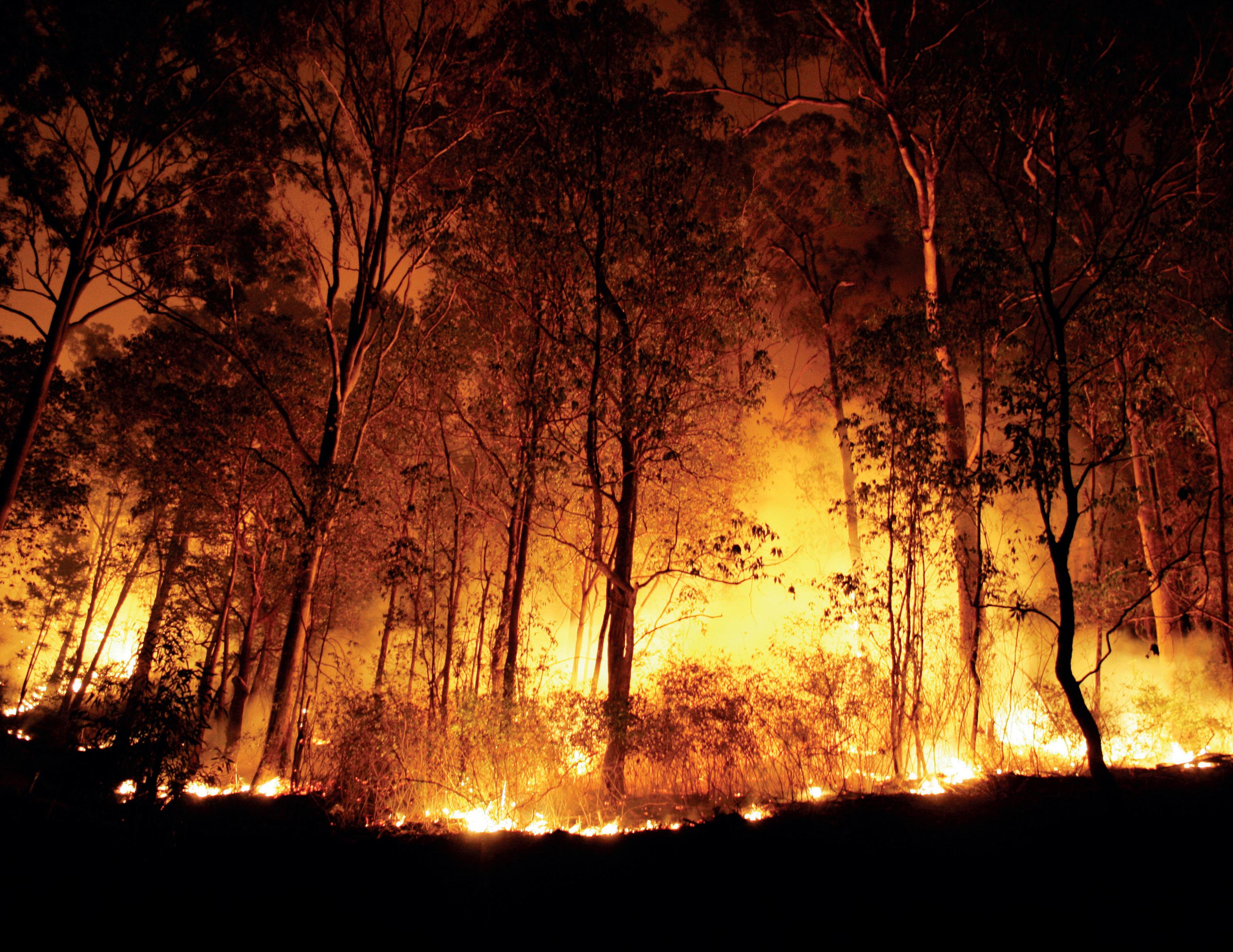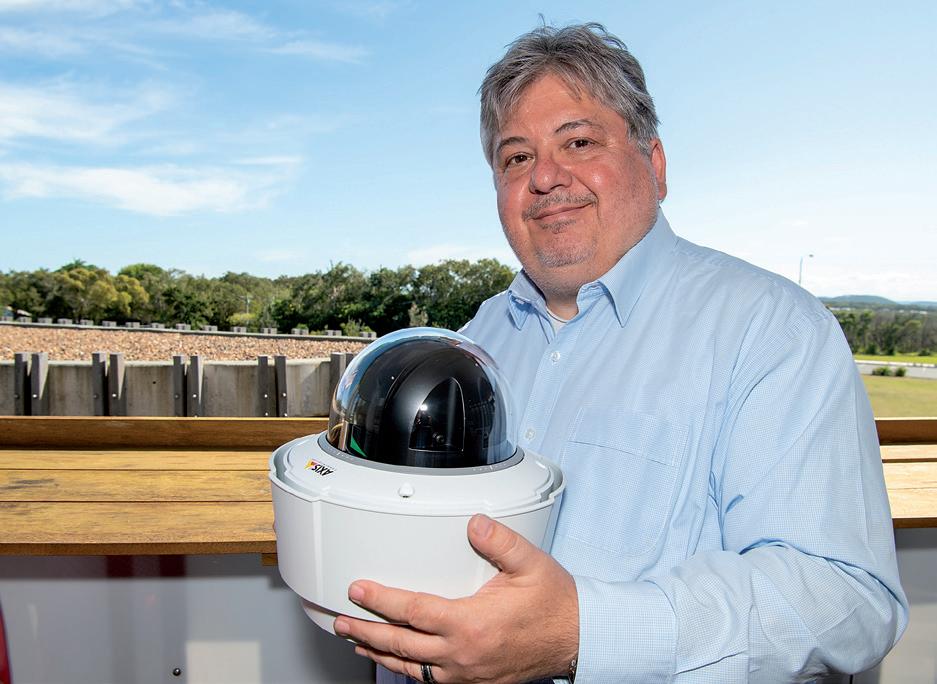
4 minute read
NEW FIRE technology WILL HELP SAVE LIVES
September 9, 2019 started like any other day. It was hot and dry and the grass, bereft of life, crunched underfoot. Much like the rest of Australia, the Sunshine Coast had not seen good rainfall in months and the conditions were now perfect for what was to unfold later that day.
That hot September day it was also windy, and when a fire erupted, allegedly at the hands of two teenagers, they had no hope of being able to control it if they wanted to.
When most of us see smoke, we often mistakenly believe someone is burning off, it’s a controlled burn or that someone has already reported it. As a population we also don’t like to bother the authorities in case we are wrong about the situation and fear embarrassment of reacting too quickly.
A combination of these factors means it can take anywhere between 20 to 90 minutes, sometimes even longer, for a fire to be reported to emergency services.
What happens next can mean the difference between life and death.
Once notified, the authorities set about confirming the report, which only serves to add precious minutes when minutes cannot be spared. But it doesn’t have to be this way.
Based on Nobel Prize winning research by Professor Carl Pennypacker, the team at Fireball International led by Professor Tim Ball, Christopher Tylor and Gabrielle Tylor have created a wildfire detection, mapping, and intelligence system that can detect fires using artificial intelligence and notify the emergency services within one to three minutes of the fire starting.
According to Managing Director, Christopher Tylor, the technology is available in Australia right now and it will change the way we monitor and respond to fires.
Fighting fires himself for more than 50 years, Tim Ball said the early detection of fires was critical to saving lives.
“Sometimes, it is not possible to save property but if we can provide emergency services with accurate information in real-time, they are better equipped to make decisions that are also likely to be accurate,” said Tim.
“Using satellite and camera surveillance we can literally give them a real-time “birds-eye” view of what is happening on the ground that they have no other way of detecting and it can help to save lives.”
Tim knows this only too well. On 23 October 2019, in similar conditions to what we were experiencing on the Sunshine Coast late last year, Kincade in California was experiencing its own version of hell.
A 230,000-volt transmission line from a power company failed in extreme winds. The ensuing fire that erupted lasted for two weeks and burned 77,758 acres. While four people were injured, no lives were lost thanks in part to the real-time data being streamed live via the satellite used by Fireball International to the emergency services on the ground.
The explosion occurred at 9.24pm and the fire was detected by the satellite used by Fireball International within 66 seconds. Within three minutes the authorities were notified of the eruption. Emergency Services continued to be fed real-time image updates by the ALERTWildfire network after that.
Perhaps what is most remarkable about this story is that no lives were lost. Christopher explained that due to the high winds and the remote location there was little hope of bringing this fire under control quickly.
“The system provided real time data to the Command Centre and they were able to track the direction and speed of the fire which meant they were able to safely evacuate people when they needed to. Cal Fire saw immediately that they had a problem on their hands. The evacuation order of Healdsburg was issued within 10 minutes after the fire started,” he said.
According to the Australian National University , the cost of fires on our economy over the next 30 years is estimated to be around $2.2 billion per year. The same report estimates the implementation of early fire detection solutions will “reduce the probability of large fires” and provide an economic benefit of around $14.4 billion.
But it’s not just the cost on our economy that needs to be considered. The report notes that the human and wildlife cost, as we are only too aware, was significant.
The 2019/20 fires in Australia claimed 34 lives, impacted 78.6 per cent of Australians, either directly, through their family/friends, or through the physical effects of smoke and around 2.9 million adult Australians had their property damaged, threatened, or had to be evacuated.
Already in talks with all levels of Government and other key stakeholders, the team at Fireball International has satellites in place to detect fires and to notify the emergency services. Fireball is also working towards launching an Australian-built fire spotting satellite with an Australian rocket from a Queensland space port by March 2022.

“The technology is available in Australia right now and we are ready to activate it just as we have done across the USA,” said Christopher.
Given that we are now in Summer, and the grass underfoot is once again crunchy – let’s hope the Government gives the green light on this initiative so that we can start to monitor and detect bush fires in order to prevent a repeat of the events of 2019/20.
PREPARE. ACT. SURVIVE.
Bushfires could be closer than you think. Prepare your home, property and family now and have your Bushfire Survival Plan in place before bushfire strikes.
The Rural Fire Service website has advice and resources on how you can be best prepared for bushfire season, including a step-by-step guide to create your own Bushfire Survival Plan. They encourage you to plan to...
∙ Keep you and your family safe
∙ Make your property resilient

∙ Protect irreplaceable valuables and important documents
∙ Have adequate insurance to minimise losses. For more information visit www.ruralfire.qld.gov.au









